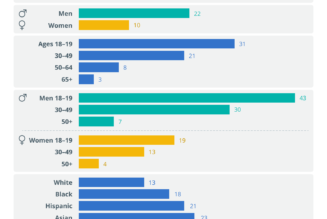A vast supply of lithium lies underneath Arkansas, according to a new study.

Arkansas is sitting atop lithium reserves that could be vast enough to satisfy the entire world’s demand for EV batteries, according to the US Geological Survey (USGS).
It estimates that there could be 5 to 19 million tons of lithium under southwestern Arkansas. That would be enough to supply nine times the amount of the key material needed globally for car batteries in 2030, the USGS says.
Lithium is a key ingredient for rechargeable batteries used in EVs and all kinds of devices. As the US tries to limit the greenhouse gas emissions causing climate change by encouraging electric vehicle adoption, the Biden administration has made it a priority to build up domestic supply chains for critical minerals including lithium. The US might already have all the lithium in needs and then some, a recent study shows, if companies can develop new technologies to tap into it.
“Lithium is a critical mineral for the energy transition, and the potential for increased U.S. production to replace imports has implications for employment, manufacturing and supply-chain resilience,” David Applegate, USGS director, said in a press release yesterday.
Lithium laces the salty brine from the Smackover Formation, a geologic formation made of permeable limestone that stretches across parts of Arkansas, Louisiana, Texas, Alabama, Mississippi, and Florida. The formation is the result of an ancient sea, and it’s also a historic site for oil and gas production.
Until recently, that lithium-rich brine had been thought of as wastewater from oil and operations. Now, companies are trying to develop technologies to extract the lithium in a cost-effective way.
ExxonMobil is reportedly ready to pounce. The company plans to start production in 2027 and has already drilled exploratory wells in Arkansas, The New York Times reports. The fossil fuel giant declared its ambitions of becoming a “leading” lithium supplier for electric vehicles last year after purchasing drilling rights across 120,000 acres of land within the Smackover Formation in Arkansas.
“We know we have an attractive resource. We’re working on understanding that cost equation, understanding the supply-and-demand picture,” Dan Ammann, president of ExxonMobil’s low carbon solutions business, told The New York Times.
The company can use traditional oil and gas drilling techniques to reach lithium-rich saltwater trapped 10,000 feet underground. But it has to develop new technology called direct lithium extraction (DLE) to separate lithium from the water using chemical solvents or filters.
That’s supposed to be a much faster method for extracting lithium than the old-school way of leaving the brine in ponds until the water evaporates. Another potential benefit of DLE is that it would be less energy-intensive than conventional hard rock mining for lithium. To be sure, there are still concerns about the environmental impact all of these methods pose, ranging from how much land and water they use to what to do with any toxic waste left behind.
Shifting lithium production to the US would also be a global game-changer. Most lithium today comes from Australia and South America. Just 5 percent of global demand was met by US lithium producers in 2021. California’s Salton Sea also holds a lot of lithium-rich brine.
The potential in Arkansas still hinges on whether the lithium reserves will wind up being commercially recoverable, the USGS says. The agency used machine learning to produce the first estimate of the amount of lithium available in brine from the Smackover Formation in southern Arkansas, working with the Arkansas Department of Energy and Environment’s Office of the State Geologist. They analyzed new brine samples in a lab and compared them to data from historic samples of water from oil and gas production from the USGS produced waters database. A machine learning model used that data to predict lithium concentrations throughout the region.
“We have not estimated what is technically recoverable based on newer methods to extract lithium from brines,” Katherine Knierim, a hydrologist and the study’s principal researcher, said in the press release.









